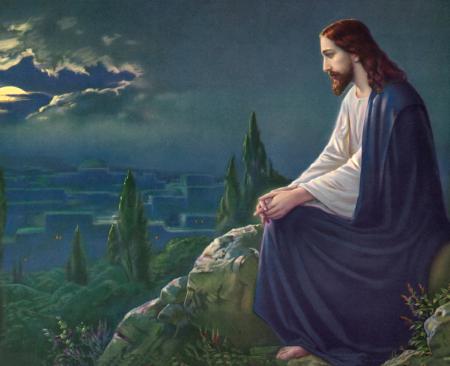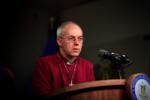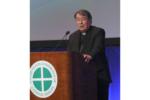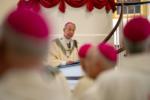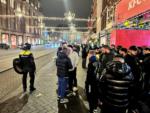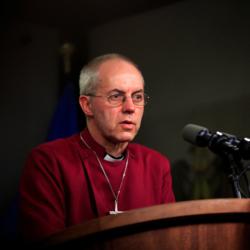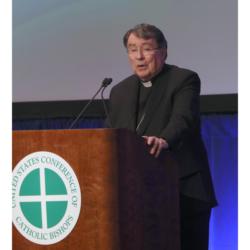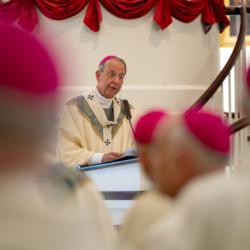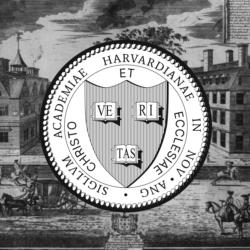The rebuilder's retirement
On Aug. 5, Pope Francis accepted the retirement of Boston Cardinal Seán O'Malley, OFM Cap., and replaced him with Archbishop-elect Richard Henning, formerly the Bishop of Providence.
It was a fitting day. Aug. 5 is the Memorial of the Dedication of St. Mary Major Basilica, Cardinal Seán's favorite of the four patriarchal basilicas in Rome and in many ways the center of Rome's Marian devotion across the centuries and still today. His episcopal motto, "Quodcumque dixerit facite," was Mary's valedictory in Sacred Scripture, given to the servants in Cana: "Do whatever he tells you" (Jn 2:5). On Aug. 5, through Pope Francis, Christ's earthly vicar, Cardinal Seán, though a quite vigorous octogenarian, was told it was time to let a younger man fill the jars to the brim. And he characteristically did what he was told, with serenity and a smile.
I had the joy to be ordained a priest by him in Fall River's cathedral 25 years ago and have been privileged to work closely by and with him as a seminarian and young priest.
A triple valedictorian -- high school, college and graduate school -- fluent in 10 languages, he marked his 80th birthday on June 29 and his 40th anniversary of episcopal ordination on Aug. 2. Half of his life, and 40 of his 54 years as a priest, he has spent wearing a bishop's pectoral cross.
That pectoral cross has been prophetic.
In the Virgin Islands, he had to deal with Hurricane Hugo in 1989, which devastated the island of Saint Croix. In his other three dioceses -- Fall River, Massachusetts, Palm Beach, Florida, and for the last 21 years Boston -- he had to deal with the destruction wrought by some of the most notorious instances of the clergy sex abuse crisis. Through it all, he proved himself not just a successor of the apostles but, as a Capuchin Franciscan, of St. Francis of Assisi, whose mission to rebuild Christ's Church falling into ruins O'Malley embraced and actualized.
Unlike the poverello, Padre Seán had no visible stigmata, but he certainly interiorized the wounds of Christ's mystical body.
In 2002, as the bishops were preparing for the meetings in Dallas to address thousands of clergy sexual abuse accusations and the woefully inadequate response of Church leaders, I was one of a small group of young priests meeting with him as he asked our advice about the proposed Dallas Charter for the Protection of Children and Young People and its accompanying Norms.
As he recounted some of his encounters with victims and what they endured, he got so emotional that he needed to leave the room for several minutes just to compose himself enough to continue. On other occasions, he became severely nauseous detailing what survivors have undergone.
That's because for him the sexual abuse of God's children was never just an "issue." Every victim had a face, and a story, and very real wounds, as did their family members, friends and everyone else who cared for and about them. He became the heart, the upset stomach and even the tear ducts of the Mystical Body as he battled various forms of ecclesial corruption to heal the wounds of the past, to prevent their recurrence, and to respond not as lawyers or politicians, not with defensiveness and denial, but as Christians ought and must.
For a while it seemed that he was the only prelate whom the Vatican deemed fit to lead dioceses impacted by clergy sexual abuse, whereas every bishop should be capable, qualified and zealous to do so.
His reputation and character were also why he was asked to spearhead the Vatican's efforts internationally for the protection of minors, an office that, in addition to trying to bring lots of local churches slow to acknowledge the need for and to adopt safe environment protocols, has led this meek man, loathe to embarrass, on three occasions to be forthrightly and publicly critical of the Vatican's statements and actions.
His ongoing efforts to reform the Church with regard to the sexual abuse of minors and vulnerable persons will likely be his most conspicuous and historic legacy of reform.
But it's not the only renewal he's helped to spearhead.
He's been a reformer of the priesthood and of seminaries and a magnet of priestly vocations. Several times the Vatican has asked him to be a visitator for seminaries in various continents experiencing different types of problems. He's preached countless retreats for clergy and brother bishops. He's sought to provide excellent priestly formation for the many seminarians he's had wherever he's been. He's met with his young priests regularly to form them in holiness, and to ensure they have access to what can help them humanly, spiritually, apostolically and intellectually. Once, during a priestly ordination, after I had observed him lay hands for 77 seconds on the soon to be priest, he told me that he consecrates every new priest to Our Lady asking her to protect and intercede for him.
He's similarly been a reformer of religious and consecrated life, not only doing similar visitations when asked by the Vatican, but also advising, helping to found and protecting various new religious institutes, inviting many new movements raised up by the Holy Spirit in the 20th century to the dioceses he's guided, and frequently visiting various religious houses and assisting them as needed.
He's been a vigorous reformer of sacred preaching. His homilies are simply epic. Against a minimalist mentality that claims that Catholic attention spans can survive only 7-10 minutes, he's regularly preached more than a half hour, proving that, just like Protestants can listen to good preaching for 45 minutes or more, so can Catholics. And he's done this in Spanish, Portuguese, English, French, Creole, Italian, and German, speaking the people's idioms in ways everyone can understand and take inspiration. Because he's on fire, he effectively sets others' hearts ablaze. A natural Irish storyteller with a doctorate in Portuguese and Spanish literature, endowed with a great sense of humor and a deep well of clean jokes, he, like the Lord with parables, makes unforgettable points drawing lessons through narratives, which helps people eventually to discover that they are part of the greatest story ever told.
He's been a reformer against divisions in the Church. He transcends the liberal/conservative divide, passionately loving both the truth and others, especially the poor, out of love for God. He may be the only priest who has been to every March for Life since the first in 1974 but he was also among the first bishops to establish a ministry to those with AIDS.
He likewise has always sought to bring different linguistic and cultural factions in the Church together, at the Spanish Catholic Center in Washington, DC, working with Caribbean, Central and South American immigrants as a deacon and priest, and since, in all the dioceses he's led.
He's sought to serve both the poor and rich, striving to be all things to all, famously sleeping on cockroach-infested floors close to those he was serving in DC, evangelizing both wealthy and impoverished in Palm Beach, eating pizza and ice cream at simple eateries as well as being and putting others at ease when invited to fine restaurants.
The biggest reform the Church needs, according to Pope Francis, is missionary, and Cardinal Seán has been a missionary from the beginning of his religious life. He thought he would spend his priesthood proclaiming the Gospel with fellow Capuchins in Papua New Guinea. This evangelical dimension characterizes his whole life as he generously accepts several major commitments on the same day, within and outside his dioceses, somehow trying to make them all cohere. It also explains how he, with all his responsibilities, regularly initiates phone calls and get togethers.
Since every reform must begin with personal reform, he likewise prioritizes that metanoia. Far from crowds, every day, he devoutly prays his breviary, celebrates Mass, makes time to adore Jesus in the Eucharist, recites the Rosary, lives as he has vowed, and practices what he preaches.
It's been an honor to be one of his many spiritual sons and among those he has recognized with the title friend. As a young priest, I treasured the many 9 p.m. calls to go out for pizza, and in Rome, the even later trips for gelato. I also have appreciated, whenever I've needed it, his gentle attempts to reform me.
There is still much in need of rebuilding. Retired from Boston, this reformer is now able to be even more missionary, saying yes to more invitations and inspiring others to join a Nazarene carpenter's construction crew -- and, following Mary's bidding and his own example, doing whatever that carpenter says.
- Father Landry is a priest of the Diocese of Fall River who is national chaplain to Aid to the Church in Need USA, a Papal Missionary of Mercy and a Missionary of the Eucharist for the US Bishops.
